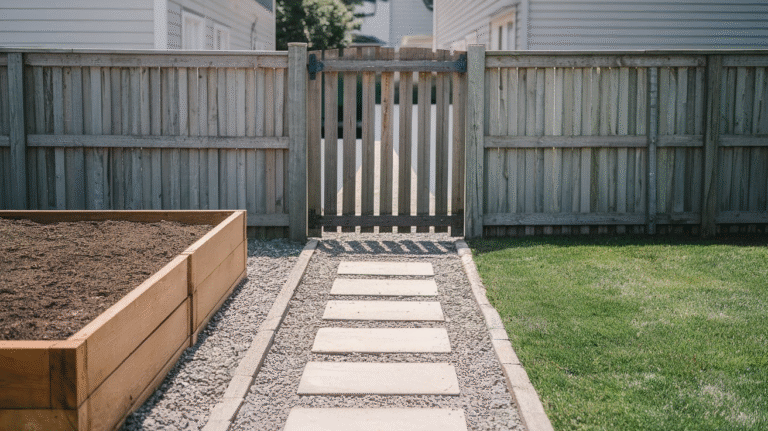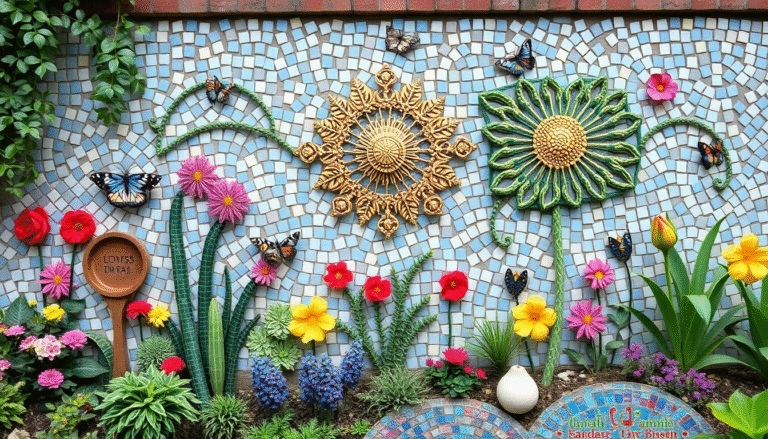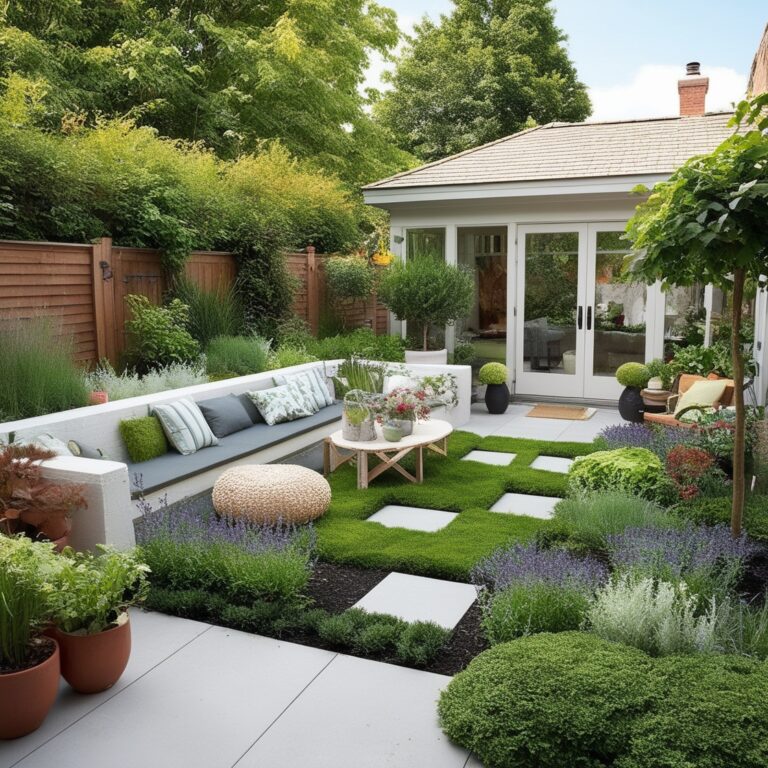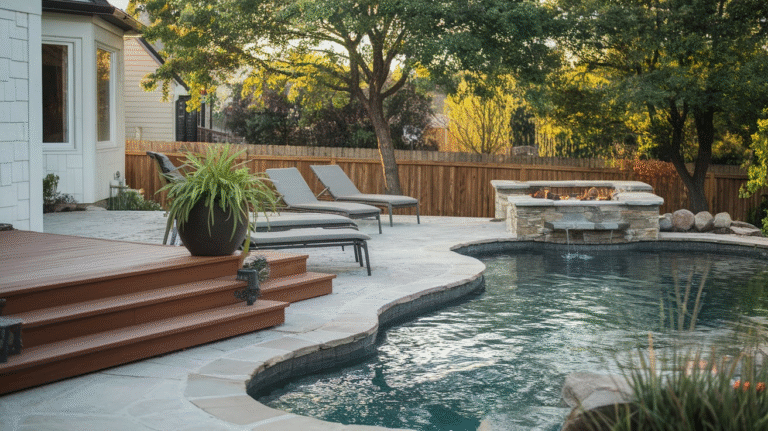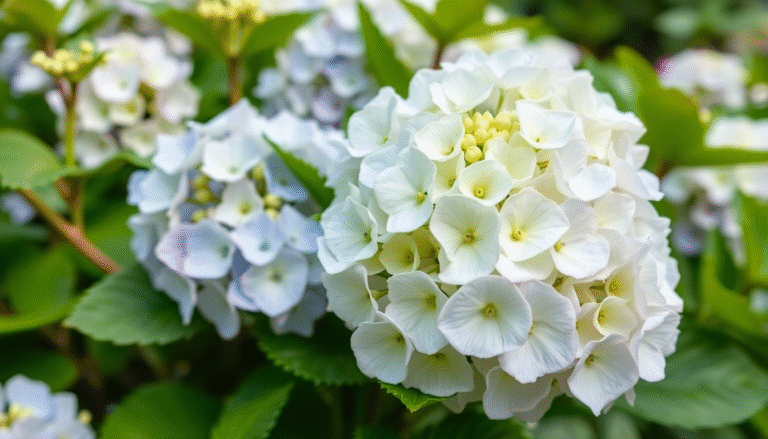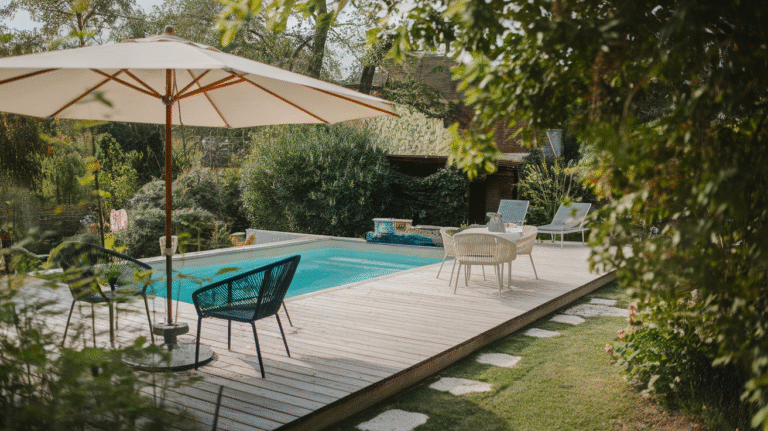21 Low Maintenance Landscaping Front Yard Ideas
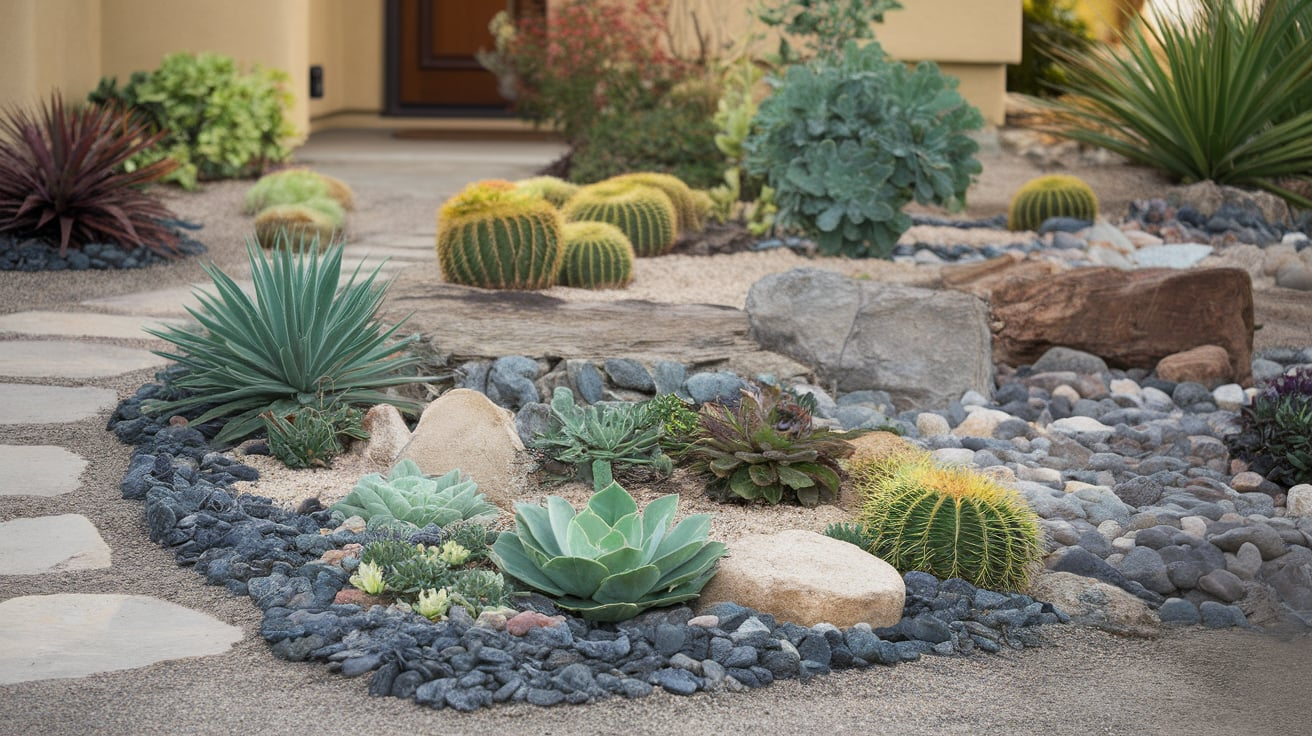
The Art of Easy: Why Low Maintenance Landscaping is a Smart Move
Let’s be honest: most of us don’t dream about spending our Saturdays knee-deep in mulch, battling weeds like a backyard gladiator.
And watering schedules? Please. Between work, kids, pets, and the occasional nap attack, time is a scarce luxury.
That’s where low-maintenance landscaping comes into play — a secret garden of sorts for those who crave beauty without the fuss.
These ideas are more than just trends. They’re strategies.
Each one is rooted (pun absolutely intended) in efficiency, sustainability, and timeless design.
Whether you’re a city dweller with a postage-stamp yard or reigning over a suburban corner lot, these ideas will meet you where you are—with a cold lemonade and a rake you barely need to use.
1. Embrace Native Plants: Nature’s Auto-Pilot
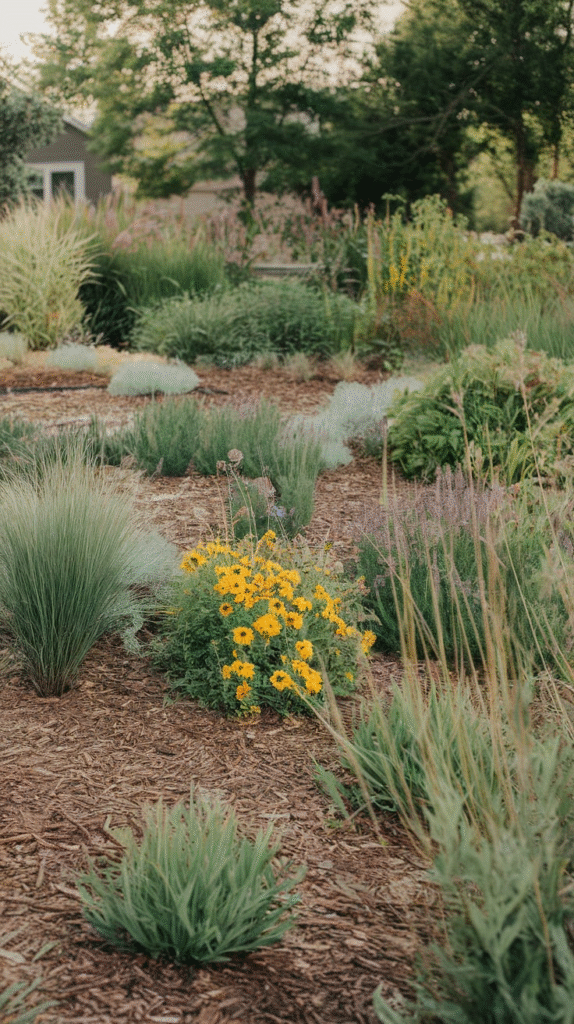
When in doubt, go local.
Native plants are like that one friend who brings their own snacks, handles their own problems, and still manages to thrive at your parties.
They’re adapted to your region’s soil, rainfall, and climate, meaning less water, fewer pests, and virtually no fertilizer.
For example, if you’re in California, plants like California poppies, manzanita, and ceanothus practically do the landscaping themselves.
In the Midwest? Try coneflowers, blazing star, or black-eyed Susans. They’re perennials that laugh in the face of neglect.
A study by the U.S. Forest Service found that native landscaping can reduce water usage by up to 50% compared to traditional lawns.
That’s not just green for the planet—it’s green in your wallet too.
2. Ditch the Lawn for Ground Covers
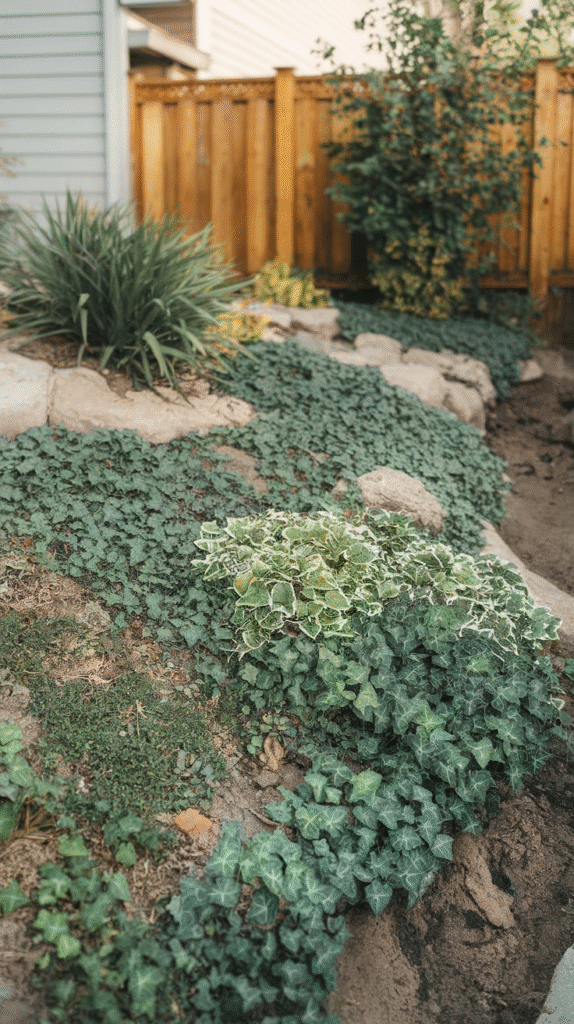
Lawns are lovely… until they start acting like needy roommates.
Ground covers like creeping thyme, sedum, or clover offer lush greenery without the mowing drama.
Some even flower, giving your yard a soft, natural carpet of color.
I once replaced a quarter of my lawn with creeping Jenny and haven’t pulled out the mower in that area since.
It’s like watching a little green river ripple through the rocks—and my water bill dropped noticeably.
Bonus: ground covers are incredible for erosion control and suppressing weeds.
Think of them as the bouncers of your yard, quietly keeping the troublemakers out.
3. Rock Gardens That Rock
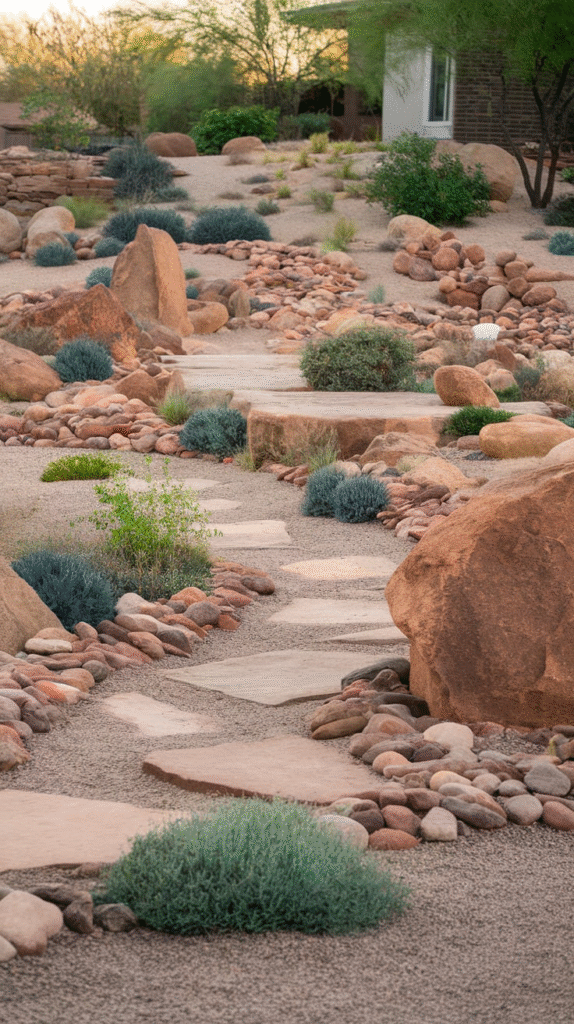
Not only are rock gardens visually stunning, but they also require minimal upkeep.
With a mix of pebbles, large stones, and drought-tolerant plants like succulents or ornamental grasses, you can build a front yard that looks sculpted by nature.
Use river rocks or crushed granite for pathways and borders.
Toss in a weathered boulder or two, and you’ve got texture, interest, and a dash of zen.
Maintenance? Practically none. Just a little sweeping now and then. Rocks don’t die, they don’t wilt, and they don’t ask for attention.
A perfect match for busy lives.
4. Go Mulch Crazy
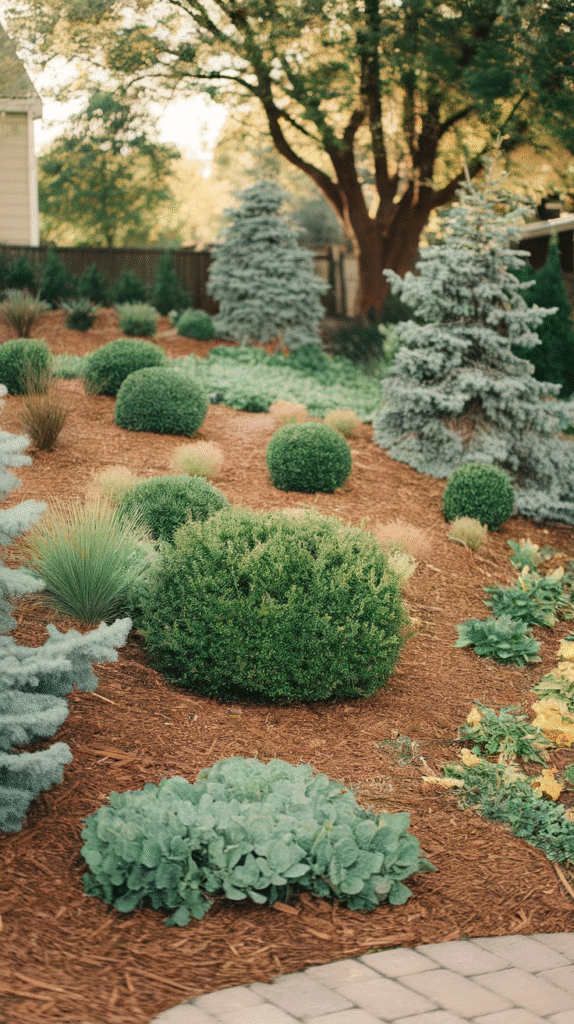
Mulch is the unsung hero of the landscaping world.
Whether it’s bark mulch, straw, or decorative gravel, a thick layer keeps weeds at bay, holds in moisture, and gives your yard that polished, just-finished look all year round.
I use cedar mulch not only for its insect-repelling properties but because it smells like a lumberjack hugged my garden.
Trust me—mulch once a year, and you’ll reap the rewards all season long.
Plus, mulch breaks down and feeds your soil naturally. That’s right—your yard literally gets better while you ignore it.
5. Xeriscaping: The Art of Dry Gardening
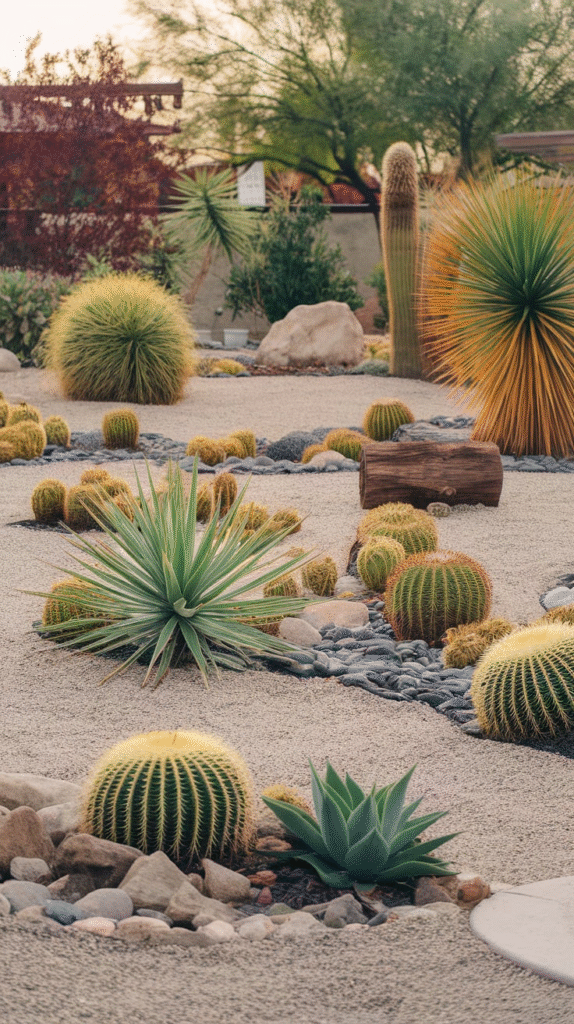
No, xeriscaping doesn’t mean your yard has to look like the Mojave Desert.
It means designing your landscape to minimize water use, typically by using drought-tolerant plants, efficient irrigation, and smart soil practices.
Popular in arid regions like Arizona and New Mexico, xeriscaping is catching on everywhere thanks to increasing water bills and climate concerns.
According to the EPA, landscaping accounts for 30% of household water usage. Xeriscaping can cut that by 60% or more.
Imagine getting the same curb appeal with less than half the effort (and cost). That’s smart landscaping.
6. Install Artificial Turf (Yes, Really)
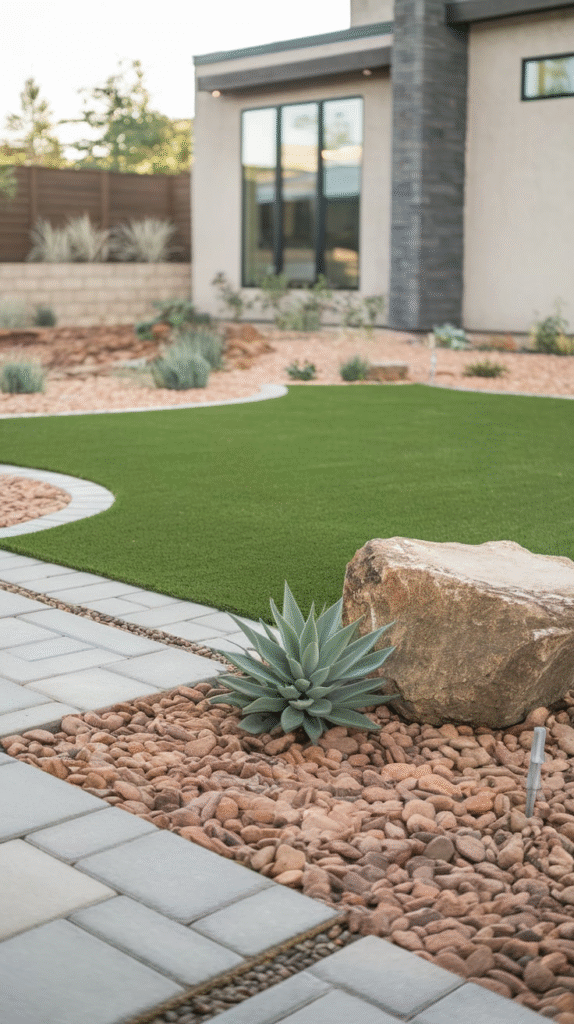
Before you write off artificial grass as “too fake,” hear me out. The newer versions look incredibly realistic and feel surprisingly soft underfoot.
I installed a small patch near my front porch for the dog—and neighbors have asked how I keep it so green.
It never needs mowing, watering, or fertilizing. It’s always perfect.
That’s time, water, and money saved, all while giving you a permanent picture-perfect lawn.
7. Design with Gravel Paths
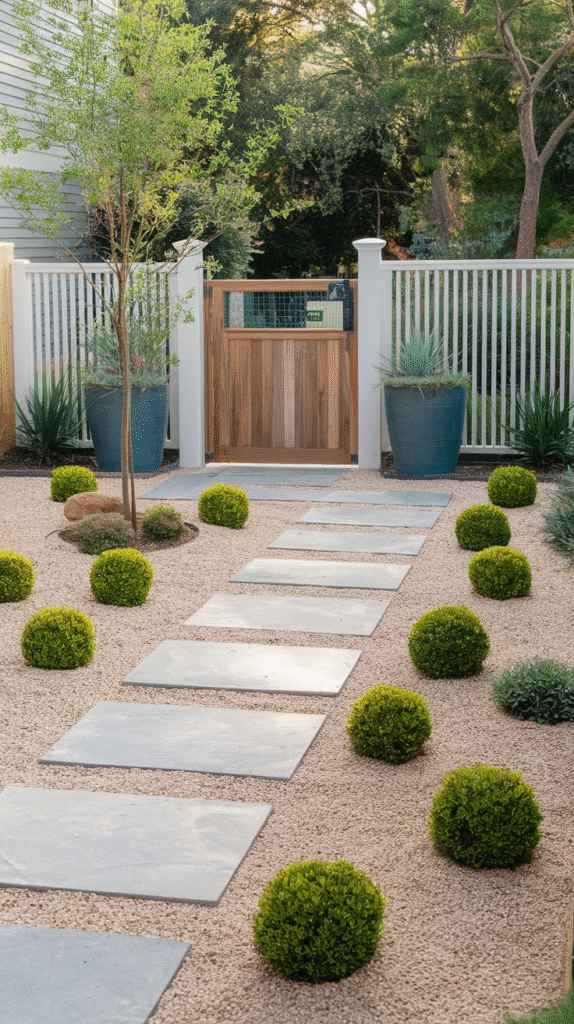
Gravel paths are the lazy genius’s walkway. They define space, guide guests, and eliminate the muddy mess of foot traffic.
Whether winding or straight, pea gravel or crushed stone, they add a rustic charm that feels purposeful and clean.
Tip: Lay down weed barrier fabric beneath for nearly zero maintenance. Add a few solar lights and boom—your yard just leveled up.
8. Raised Beds = Contained Chaos
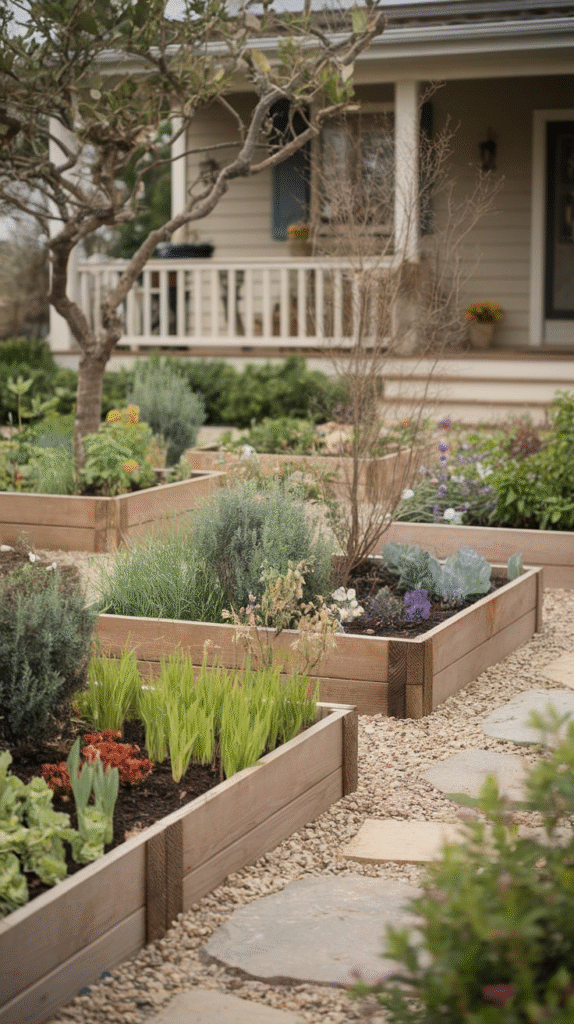
There’s something oddly satisfying about a raised bed. It’s like giving your plants their own penthouse suite.
Neat borders, easy to weed, and great for drainage. They also discourage foot traffic (and paws) from trampling your greenery.
Raised beds made from stone or metal last decades and keep your front yard tidy.
Fill them with perennials, herbs, or native wildflowers. Maintenance? A quick pass with the hose and you’re good.
9. Evergreens for Evergreen Beauty
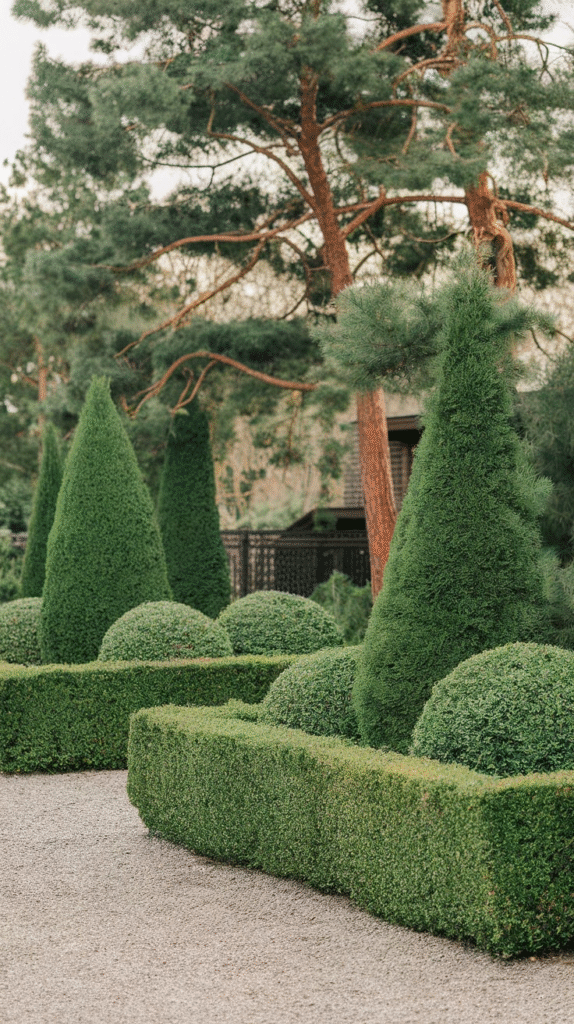
Who says your yard has to go dull in winter? Evergreens—like boxwoods, junipers, and dwarf spruce—keep things lush and structured year-round.
They’re hardy, slow-growing, and require very little care once established.
Plus, they create natural borders and privacy screens without ever turning into a jungle.
10. Ornamental Grasses for Texture and Movement
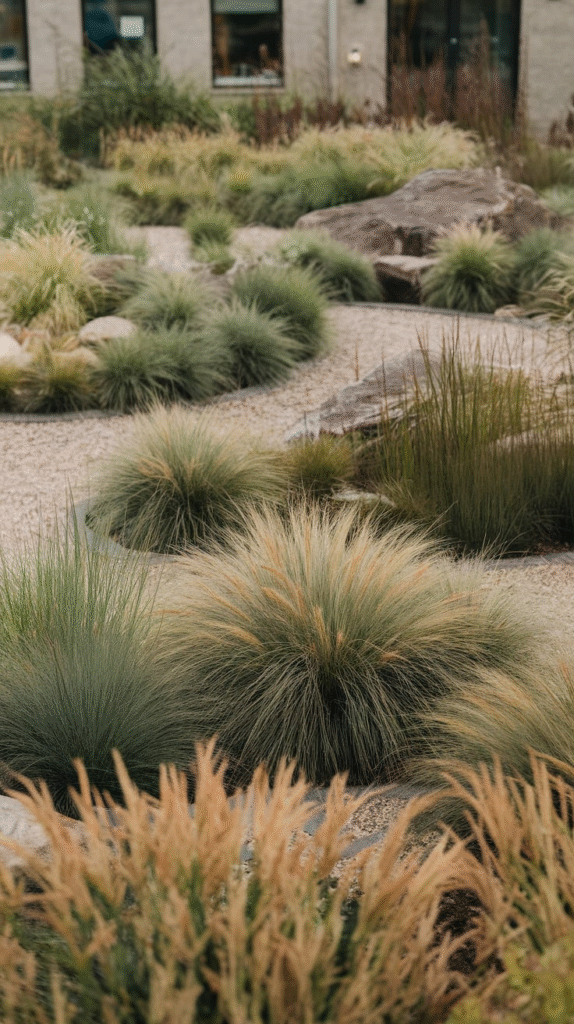
You want drama in your yard? Get ornamental grasses.
These low-maintenance stunners sway in the wind like runway models and come in colors from pale gold to deep burgundy.
Varieties like feather reed grass or blue fescue are drought-tolerant, pest-resistant, and fast-growing.
Plus, they don’t need deadheading or much trimming. I plant them in odd-numbered clusters for a more natural look.
11. Limit Your Plant Palette
One of the best-kept secrets in professional landscaping? Fewer plant types = easier care.
When you choose just a handful of hardy, low-maintenance plants and repeat them across the yard, you simplify everything—watering, pruning, even visual impact.
It’s the landscaping equivalent of a capsule wardrobe. Everything goes with everything else, and you always look put together.
12. Add a Dry Creek Bed
A dry creek bed is part design, part drainage, and totally impressive.
It mimics a natural stream using rocks, boulders, and maybe a few native grasses or mosses.
It’s practically maintenance-free and helps direct rainwater away from your foundation. Stylish and functional.
The landscaping equivalent of having both Netflix and Hulu with no ads.
13. Hardscaping Is Your Friend
Hardscaping means using non-plant elements—like pavers, stone patios, benches, or retaining walls—to define your yard.
It’s the opposite of needy.
Hardscape doesn’t grow, wilt, or get eaten by deer. Use it to carve out seating areas, entry paths, or raised borders.
It’s structure with style, and it lets your plantings shine without overgrowing their welcome.
14. Container Plants: Mobile, Manageable, Magnificent
Want flexibility with minimal fuss? Go for container gardening.
Big pots filled with perennials, small shrubs, or even ornamental trees can totally transform your front yard with almost no digging involved.
If something starts looking tired, swap it out. Easy as changing a throw pillow.
Plus, container plants often need less water than full garden beds—and you can use drip irrigation or self-watering pots to make it even easier.
15. Solar Lighting for Nighttime Charm
Adding solar landscape lighting doesn’t just make your front yard look magical at dusk—it also saves you the headache of wiring and the expense of electric bills.
Use them to highlight trees, paths, or architectural features.
Once installed, they work automatically. That’s about as low-maintenance as it gets.
16. Stick to Perennials
Plant once, enjoy for years. Perennials are the backbone of any low-maintenance garden.
Unlike annuals, which burn bright and disappear, perennials come back stronger each year.
Favorites like lavender, hostas, daylilies, and coreopsis require minimal care but deliver major beauty. Some even bloom for months on end.
17. Install Drip Irrigation or Soaker Hoses
Forget standing in the sun with a hose. Install a drip irrigation system or soaker hose.
They deliver water straight to plant roots with minimal waste, and you can set them on a timer for true hands-free watering.
According to the University of Florida, drip irrigation can reduce water usage by 30–50% over traditional sprinklers.
That’s not just good for your plants—it’s great for your bills.
18. Minimalist Design = Maximum Ease
Don’t overcomplicate it.
A minimalist yard with clean lines, simple plantings, and repeated shapes is not only trendy—it’s way easier to maintain.
Think sculptural plants, neutral gravel, and geometric pavers. Everything has a purpose, and there’s nothing left to weed.
19. Use Landscape Fabric (Wisely)
Under mulch or gravel, landscape fabric can stop weeds before they even start.
Just be cautious not to cover large root zones where air and water need to pass through freely.
Used correctly, it’s like putting your garden on cruise control.
20. Choose Slow-Growing Trees and Shrubs
Fast-growing trees are great—until you’re on a ladder pruning them every summer.
Slow-growing species may cost a bit more upfront but save you years of maintenance.
Look for dwarf evergreens, Japanese maples, or serviceberry trees.
They stay compact, behave nicely, and add long-term value to your home’s curb appeal.
21. Keep a Maintenance Routine (But Make It Micro)
Even low-maintenance yards need love—but just a little.
Create a once-a-month maintenance checklist: trim a shrub, sweep a path, pull a weed or two.
You can knock it out in an hour and get back to your weekend plans.
I keep a “yard day” calendar on the fridge with reminders. It’s like dental flossing—do it regularly and you’ll avoid painful surprises down the road.
Final Thoughts: Your Front Yard, Your Freedom
Low-maintenance landscaping doesn’t mean no effort—it means smart, intentional effort that pays you back in time, money, and peace of mind.
Start small. Pick two or three ideas from this list that resonate with your space, budget, and climate.
You don’t need a full yard makeover overnight.
Think of this process like making soup from scratch: one ingredient at a time, and before you know it, the whole thing comes together in a way that’s satisfying, delicious, and totally your own.
And the best part? You’ll be sipping lemonade on the porch while the neighbors wonder how you keep your yard looking so good—without ever seeing you lift a finger.
Want help deciding which ideas will work best in your region or budget? I’ve got you. Let’s talk about it.

